Puerto Rico: Geography, History and Other Facts
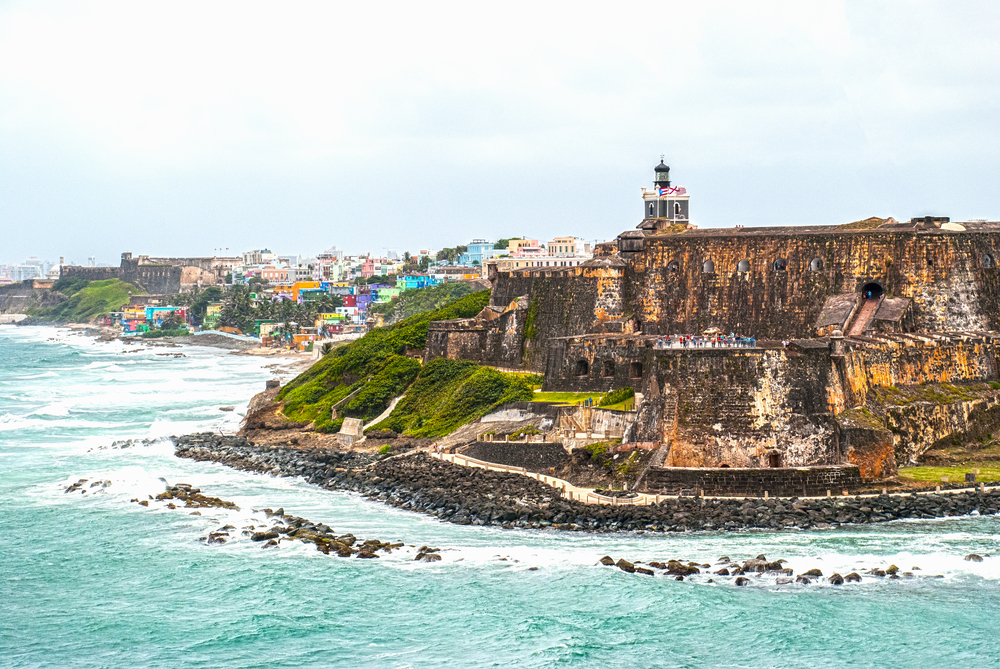
Puerto Rico is an archipelago in the Caribbean Sea consisting of a main island and a handful of smaller ones. It is part of the Greater Antilles, a grouping of the larger islands in the Caribbean. Its location has made Puerto Rico an important and strategic port for centuries.
It has also made the island a target for hurricanes. The most recent storm, Hurricane Maria, struck on Sept. 20, 2017. The Category 4 storm caused catastrophic damage only two weeks after the Category 5 Hurricane Irma skirted the island and crippled much of its infrastructure.
Politically, the Commonwealth of Puerto Rico is an unincorporated U.S. territory. Its people are U.S. citizens but they don't have some of the rights other Americans have, such as the right to vote for president.
Weather and climate
Puerto Rico lies in the tropical region at a latitude of 18.25 degrees. The climate is consistent throughout the year with an average temperature of 79 degrees Fahrenheit (26 degrees Celsius), according to the U.S. Geological Survey. The wet season lasts from May through October, although rain tends to fall year-round. August tends to be the wettest month on average and is also the start of hurricane season.
The average rainfall in the northern part of the island is about 61 inches (155 centimeters) and the southern part of the island is about 36 inches (91.4 cm). Some coastal regions receive up to 150 inches (381 cm) of rain per year, while the mountains register around 200 inches (508 cm).
Puerto Rico has been hit by several powerful hurricanes, including the devastating Hurricane Maria. Hurricane Maria knocked out power and communications on the entire island, destroyed many structures and roads, unleashed flash floods and wiped out most of the island's agriculture. It is estimated that it will take several months to restore power to the island.
The most destructive hurricane on record in Puerto Rico is Hurricane San Ciriaco, according to the Hispanic American Historical Review. The hurricane, which made landfall in Aug. 8, 1899, is still on record as the longest-lived Atlantic hurricane, at nearly 28 days. The hurricane destroyed about 250,000 homes, nearly all the crops, and left the majority of the population without access to food or clean water. Nearly 3,400 people lost their lives.
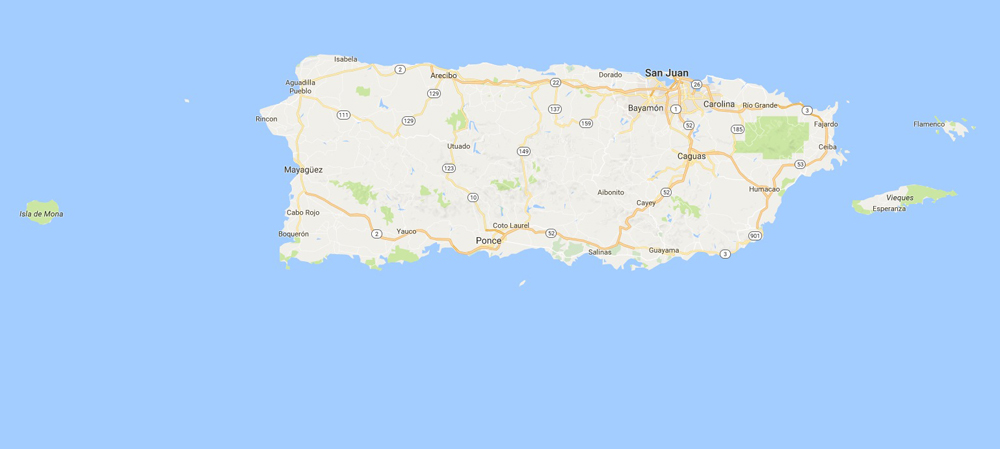
Geography
The main island of Puerto Rico is about 110 miles (177 km) long (west to east) and 35 miles (56.3 km) wide (north to south), and covers 3,515 square miles (9,104 square km) — slightly less than three times the size of Rhode Island, according to the Central Intelligence Agency. It is also almost twice the size of Delaware.
Several small offshore islands are part of Puerto Rico, but only two are inhabited year-round: Vieques and Culebra. Vieques lies about 7 miles (11.3 km) east of the main island and is approximately 21 miles (33.8 km) long by 4 miles (6.4 km) wide. About 9 miles north of Vieques is Culebra, which is approximately 7 miles (11.3 km) by 5 miles (8 km). The island of Mona lies 41 miles (66 km) west of the main island. It is only 7 miles by 4 miles (11 by 7 km) and is a protected nature preserve. The nearby Mona Passage is a key shipping lane to the Panama Canal, according to the CIA.
Puerto Rico is surrounded by some very deep waters, including the Puerto Rico Trench, which is the deepest trench in the Atlantic Ocean, according to the National Oceanic and Atmospheric Administration (NOAA). The Puerto Rico Trench is 497 miles (800 km) long with a maximum depth of 26,247 feet (8,000 m) at Milwaukee Deep. For comparison, the average depth of the Atlantic Ocean (not including adjacent seas) is 12,881 feet (3,926 m). The trench is part of a subduction zone between the Caribbean and North American tectonic plates.
Geology
The region is very active seismically — an average of five earthquakes with a magnitude greater than 1.5 occur near Puerto Rico every day. The shocks occur because the North American plate is drifting westward relative to the Caribbean plate at about three-quarters of an inch (2 cm) per year, according to the NOAA. The uplifting of a tectonic plate due to a large shift formed the island, as well as the other islands in the area.
Río Camuy in the northern part of the island is part of the third largest subterranean river and cave system in the world. The caves were discovered in 1958, and 16 passages have been found and over 7 miles have been explored. The largest cave is Cueva Clara, which is 695 feet (211 km) long.
Puerto Rico is a very diverse region, with a mountain range, coastal plains, a desert and a rainforest. The main mountain range is known as La Cordillera Central, and runs east-west across the center of the island. The highest point on the island is Cerro de Punta, at 4,389 feet (1,338 m).
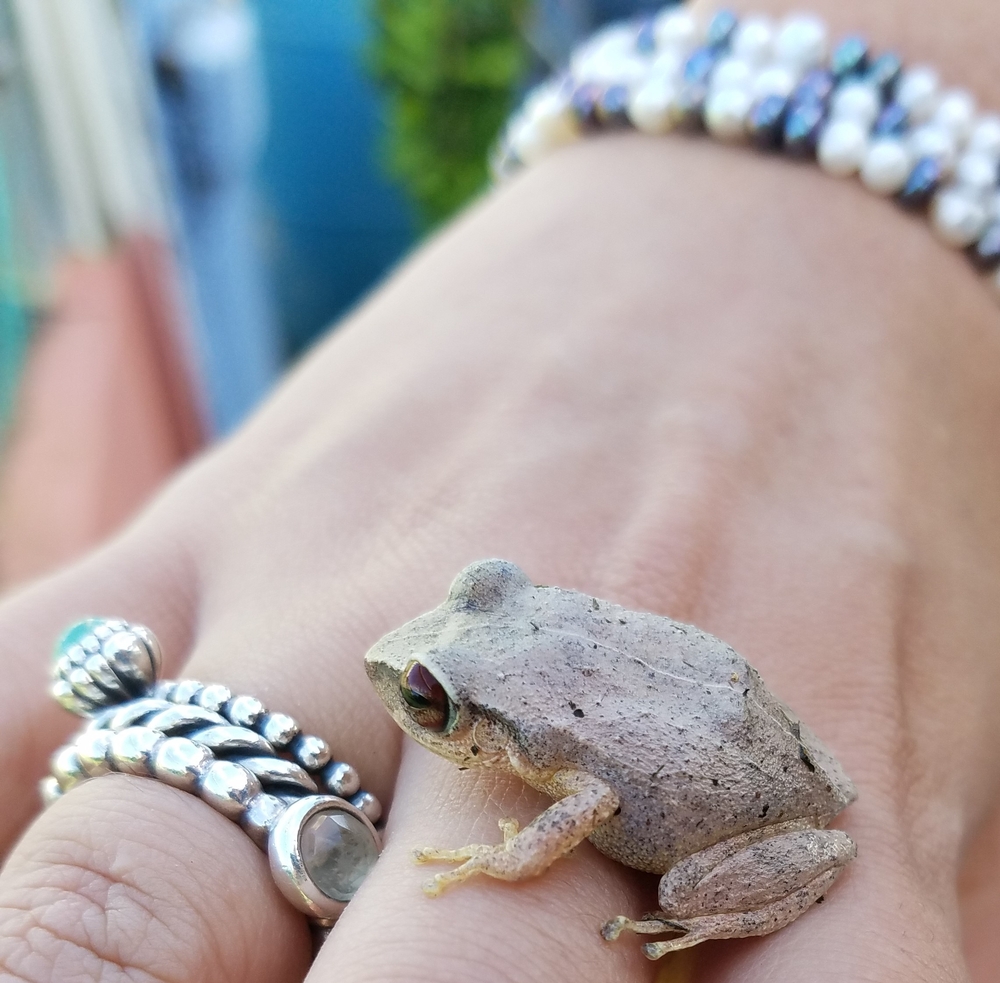
Flora and fauna
The El Yunque rainforest lies in the eastern part of the island at the highest elevations of the 28,000-acre Yunque National Forest, which is part of the U.S. Forest System. It is the only rainforest that is protected in the United States. Although the rainforest is one of the smallest protected regions, it is one of the most diverse.
It rains four times a day in the rainforest, according to El Boricua magazine. Annual rainfall is about 240 inches (610 cm), which translates to over 100 billion gallons of water. The temperature underneath the canopy stays around 73 F (22.8 C) year-round. These conditions are perfect for many types of plants and trees to thrive. There are thousands of native plants and trees, including at least 240 species of trees (with 23 known to exist only in this forest), 150 species of fern, 50 species of orchids and many species of vines and mosses.
No large animals reside in the rainforest, but countless small animals do. These include 50 species of birds (including the endangered Puerto Rican parrot), 11 species of bats, eight species of lizards and 13 species of the coquí frog, the national mascot. There are also many types of snakes, insects and rodents.
The driest place on the island, on the other hand, is a desert-like forest known as Guanica Biosphere Reserve and State Forest, in the southwest region. Only about 30 inches (76.2 cm) of rain fall per year. The Cordillera Central mountain range blocks most of the rain systems in a phenomenon known as a rain shadow. The nearly 10,000-acre forest has been protected since 1919 and was declared a UNESCO International Biosphere Reserve in 1981.
There are at least 700 species of plants in the Guanica Reserve, including 48 endangered plants and 16 that are endemic to the region, including the gumbo limbo tree and the guayacán tree. The largest variety of birds on the island, at least 185 species, lives in the reserve. That includes most of the 16 species native to Puerto Rico, such as the Puerto Rican woodpecker and the endangered Puerto Rican nightjar. There are also countless reptiles and amphibians within the reserve, including the national coquí frog.
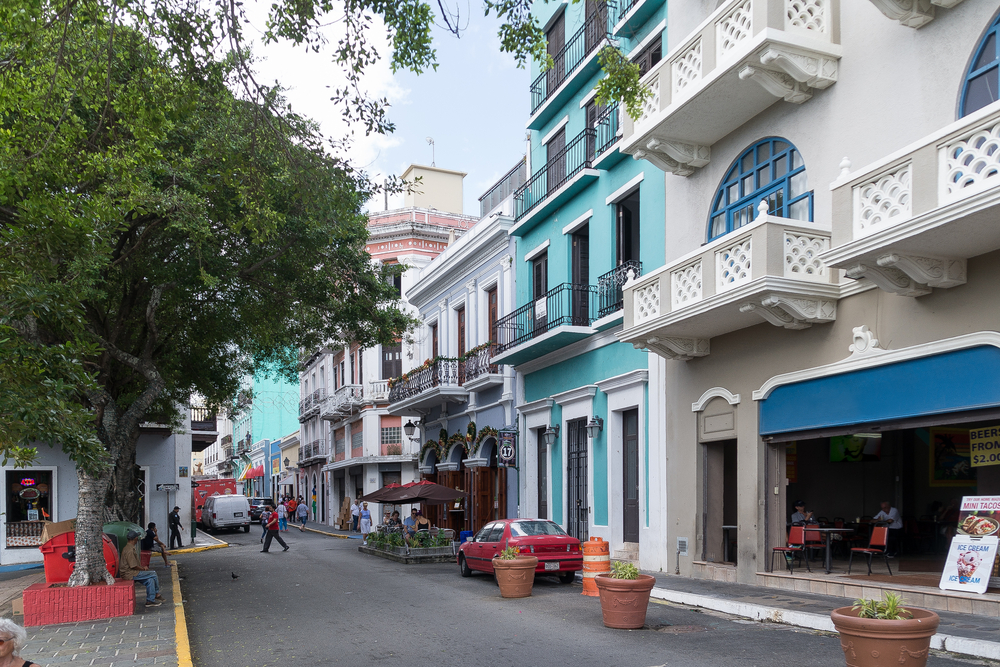
History of Puerto Rico
Puerto Rico, originally known as Borikén ("land of the brave lord"), was originally inhabited by the Taino tribe. The Taino people were a subgroup of the Arawak people of South America, and the group that inhabited Puerto Rico was traced back to a village in what is now Venezuela, according to El Boricua. The Taino were very peaceful and lived in several different villages across the island. They specialized in a unique style of pottery, farming and fishing.
The Taino welcomed Christopher Columbus when he landed in Puerto Rico in 1493 on his second voyage from Spain. Famed for their hospitality, they even showed Columbus the gold nuggetsin the river and told Columbus to take all he wanted. Columbus named the island San Juan Bautista (after St. John the Baptist) and the town in which he landed Puerto Rico ("rich port") due to the gold in the river. Over the years, the name of the town and island were swapped.
Juan Ponce de León, a former lieutenant under Columbus, arrived in 1508 and turned Puerto Rico into Spain's most important military outpost in the Caribbean due its location and natural resources. Colonization by the Spaniards soon followed, as well as the importation of slaves from Africa. Within a year, Ponce de León had conquered most of the island, enslaving or killing many of the inhabitants. The Spanish government saw this as a success and named Ponce de León as the first governor of Puerto Rico in 1509.
It is estimated that the population of the Taino went from between 30,000 and 50,000 at the time Columbus landed in 1493 to approximately 4,000 by 1514 and to about 1,150 by 1530, according to the Genocide Studies Program at Yale University. Many of the Taino died from European diseases, due to their lack of immunity. Many others were killed while trying to defend their land, or by committing suicide when captured and enslaved. Some hid in the dense forests, while others took refuge on nearby islands. Many of the enslaved native islanders who survived worked side-by-side with enslaved Africans. They mined gold and farmed high-demand crops such as sugar, coffee and tobacco.
The richness and location of the island made it a prime target for both pirates and invasion attempts by other countries, according to Frommer's. Smugglers also took advantage of the Spanish forces concentrating in San Juan, and made huge profits working out of less-protected areas.
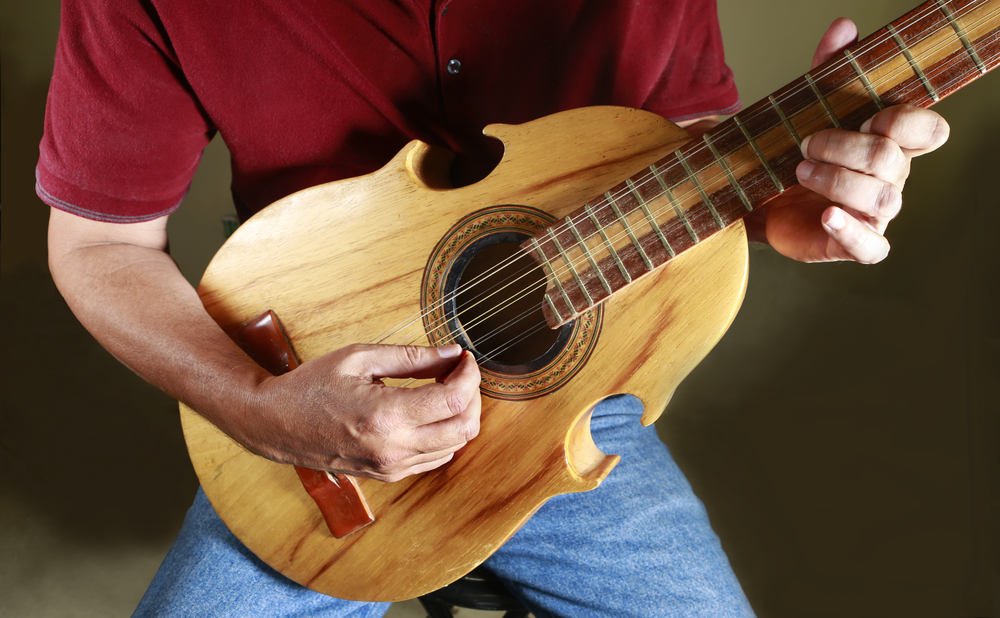
Government and people
After centuries of Spanish rule, the territory of Puerto Rico was transferred to the United States in 1898 at the end of the Spanish-American War. It was established as an unincorporated territory, which meant there was no plan to make it a state. (During the westward expansion period, the United States created incorporated territories that could and did become states, according to the History Channel.)
Puerto Ricans were granted full U.S. citizenship in 1917. However, Puerto Ricans living on the island cannot vote for president (they can if they reside in a U.S. state), and their delegate to the U.S. House of Representatives cannot vote except in committees. Puerto Ricans can serve in the U.S. military, and they pay into the Social Security system. They don't have to file a U.S. federal income tax return if their only income was from sources within Puerto Rico, according to the Internal Revenue Service.
Puerto Rico became a United States Commonwealth in 1952, which gave the island more autonomy over local matters, including elections, taxes, education, health, housing and culture. However, the U.S. Congress and the president still control matters such as citizenship, immigration, defense, currency and trade, according to Jorge Duany, a professor of anthropology at Florida International University. Congress or the president can veto any decision made by the island's legislature. It creates a situation in which Puerto Rico "belonged to but was not part of the United States," he wrote.
In recent years, there have been several referendums on statehood and independence. In the most recent vote, a nonbinding referendum on June 11, 2017, about 97 percent of voters — more than half a million people — chose statehood. There were 7,800 votes for free association/independence and more than 6,800 votes for the current territorial status, according to the Associated Press. However, turnout was low — only 23 percent — and only Congress can incorporate the islands into a state. It's unlikely that statehood will happen, Lillian Guerra, a history professor at the University of Florida, said in the History Channel article.
Culture
Puerto Rican culture is based on a blend of Taino, African and Spanish traditions, food, music, art and language. There are also influences introduced by immigrants from China, Italy, France, Germany and Cuba. American culture has also mingled with Puerto Rico's since it became a U.S. territory, according to Smithsonian magazine.
Cocina Criolla, the local name for Puerto Rican cuisine, has its roots in Taino, Spanish and African specialties and cooking styles with influences from European and Chinese immigrants. The Taino people lived primarily on tropical fruit, corn, yuca and seafood. When the Spanish arrived, they introduced many types of food, including rice, wheat, olives and olive oil, beef, pork and garlic. Enslaved Africans brought okra, taro and plantains. The Spanish also introduced sugarcane and coffee to the island. Sugarcane was used to distill rum, which today is still a favorite drink in Puerto Rico. Today's cuisine focuses on many of the same ingredients, using indigenous ingredients and many imported ones to create a unique dining experience.
Several instruments that are traditionally used in Puerto Rican music date back to the Taino people. One such instrument is the güiro, according to the Music of Puerto Rico website. The güirois a hollowed-out gourd with notches on one side that is played by rubbing a stick along the notches.
Several instruments were adapted from the six-string guitar brought over by early Spanish settlers, including the requinto, bordonua, cuatro and tiple. Percussion instruments such as panderetasand maracas were also very popular. Dances were choreographed to match the music (and the music's name). They included the bomba, plena and variations of the salsa.
Puerto Rican art also shows a blend of the many cultures in the island's melting pot. Taino art included jewelry made from gold, shells and stones. The Taino also crafted pottery and baskets, and worked with wood and stone. Religious figures that date back to the 16th century were influenced by the Spanish settlers and were known as Santos, according to the website Welcome to Puerto Rico. Santos were typically carved or molded by craftsmen using clay, stone, gold and wood. These may have been preceded by what the Taino called "cemi," highly revered small statues that stood within the villages. Large, ornate papier-mâché masks that date back to medieval Spain, tribal Africa or both are very popular during carnival time.
Quick facts
- Puerto Rico is home to about 3.4 million people. About 4.9 million Puerto Ricans live elsewhere in the United States. Puerto Rico is one of the most densely populated islands in the world with an average of nearly 1,000 people per square mile.
- The capital of San Juan is located on the north shore of the main island. There are 78 municipalities, including the islands of Culebra and Vieques.
- The official languages are English and Spanish.
- The U.S. dollar is the official currency.
- The Puerto Rican flag, adopted in 1922, has a white star in a blue triangle on the left with three red alternating with two white stripes on the right.
- The second largest radio telescope in the world is located in Arecibo.
- Several words that are commonly used in the English language originated from the Taino language, including hurricane (huracán), barbecue (barbacoa), and hammock (hamaka).
- The national bird is the reina mora, also known as the stripe-headed Tanager. The national flower is the flor de maga, also known as the Puerto Rican hibiscus. The national tree is the ceiba, also known as the silk-cotton tree. The national symbol is the coqui frog.
Additional resources
- NOAA: Exploring Puerto Rico's Seamounts, Trenches and Troughs
- Welcome to Puerto Rico: A website that explores the history, people and cuisine of the island.
- History Channel: Puerto Rico's Complicated History with the United States
Sign up for the Live Science daily newsletter now
Get the world’s most fascinating discoveries delivered straight to your inbox.
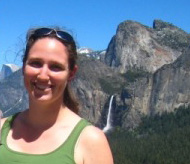
Rachel Ross is a science writer and editor focusing on astronomy, Earth science, physical science and math. She holds a Bachelor of Arts in Philosophy from the University of California Davis and a Master's degree in astronomy from James Cook University. She also has a certificate in science writing from Stanford University. Prior to becoming a science writer, Rachel worked at the Las Cumbres Observatory in California, where she specialized in education and outreach, supplemented with science research and telescope operations. While studying for her undergraduate degree, Rachel also taught an introduction to astronomy lab and worked with a research astronomer.










